Step01: Kiln dry and sand bamboo strips
When we get bamboo strips, bamboo strips will be balanced with water moisture of 8-10% into kilns. In order to get standard sizes, strips will be sanded.
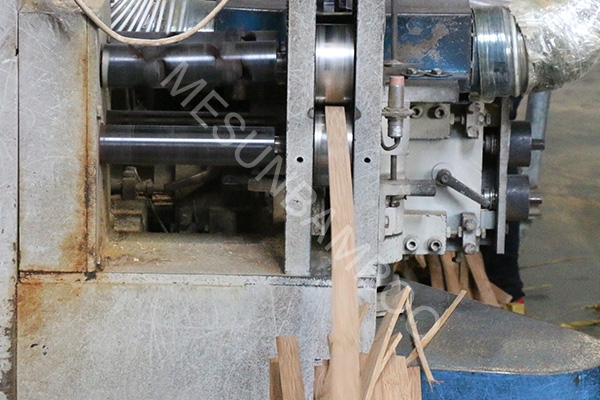
Step02: Select & match bamboo strips
Our people select and pick the defective strips. They also match the color of bamboo strips to ensure bamboo lumbers with uniform color.
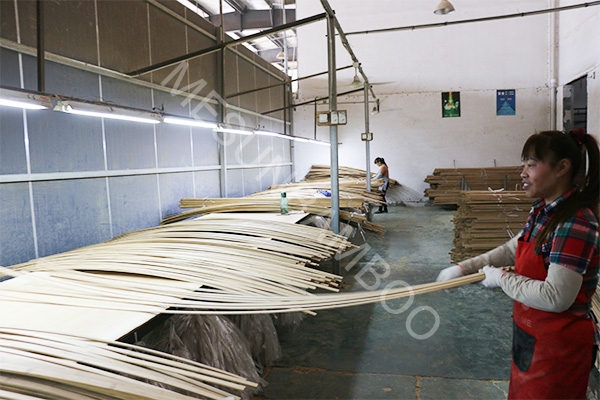
Step03: Pressed bamboo lumbers
For vertical bamboo lumbers
The selected bamboo strips are placed vertically next to each other and glued. To make wider lumber, add the quantities of strips glued and pressed together.
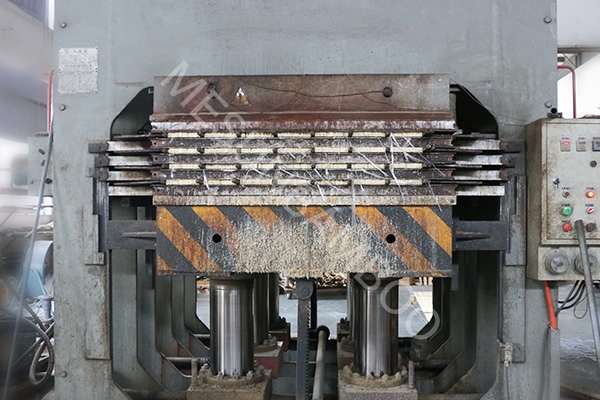
For horizontal bamboo lumbers
The selected bamboo strips are placed horizontally next to each other and glued 1-layer plate. To make thicker lumber, several layers are glued and pressed together.
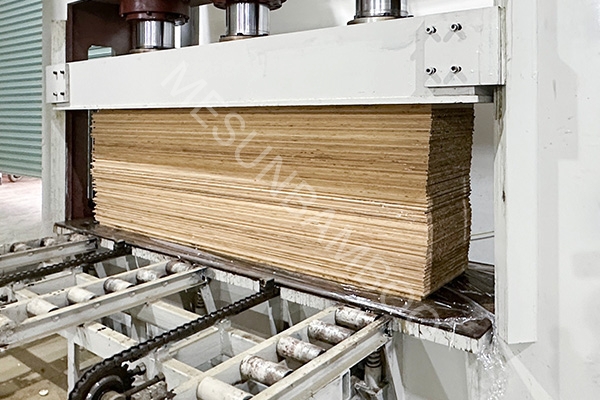
Step04: Cut into sizes of bamboo lumbers
Using saws cut the 4 sides of lumbers to get the required length & width.
Step05: Soften lumbers
Bamboo lumbers are put into the tank. Then the lumbers are put into a high-pressure tank for several hours to dry the extra water.
Step06: Slice bamboo lumbers
Using imported slice equipment, bamboo lumbers are sliced into thinner thickness (from 0.25-1mm) bamboo veneers.
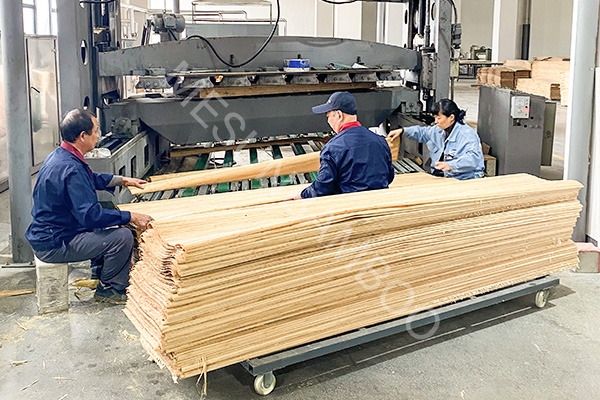
Step07: Dry bamboo veneers
With professional auto dryer machines, the bamboo veneers are dried into standard water moisture.
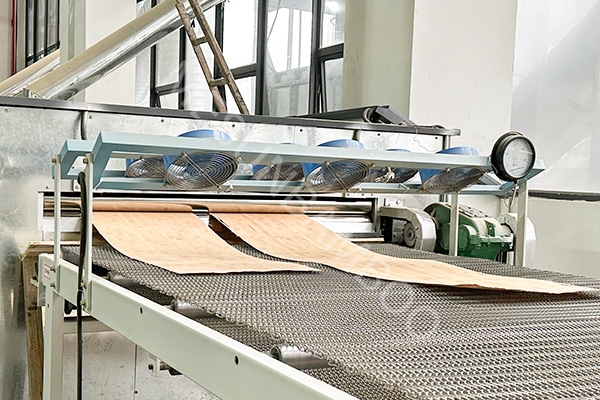
Step08: Sawing bamboo veneers
In order to get wider bamboo veneers, our worker splice 2 pieces of bamboo veneer together to meet different clients’ needs.
Step09: Gule & press cellulose fleece
Press the thin but strong cellulose fleece into the back of bamboo veneers. The cellulose fleece enhances the toughness and makes the bamboo veneers easily stick with other materials like MDF, HDF, wood, plywood, etc..
Step10: Cut into the size of bamboo veneers
We cut the bamboo veneers to the required sizes. It’s available to customize the sizes of bamboo veneers.
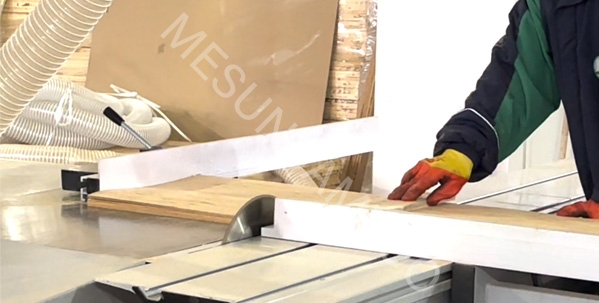
Step11: Sanding
We sand the veneers to get a flat and smooth surface. Then the veneer sheets are ready to be packed!
Bamboo veneer plywood has various applications for interior decorations and furniture with its perfect flexibility. You also can DIY shapes by laser cutting. More bendable bamboo veneers for you: https://www.mesunbamboo.com/product-categories/bamboo-flexible-veneers/.
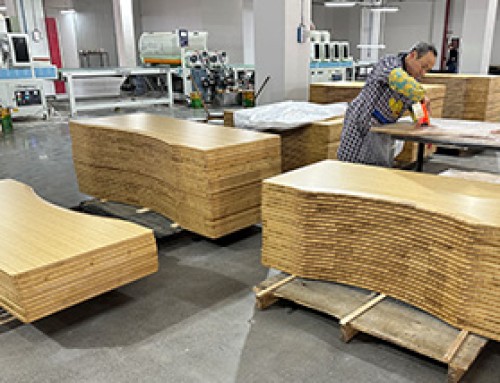
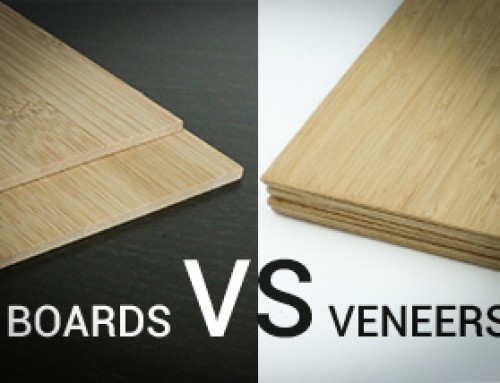
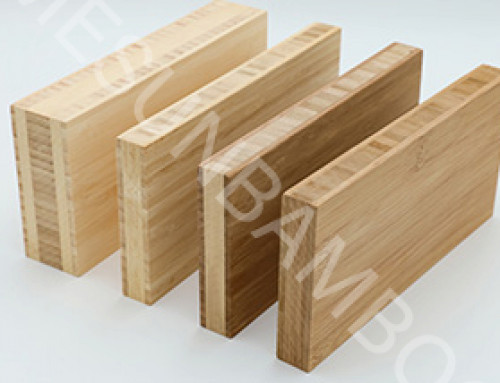
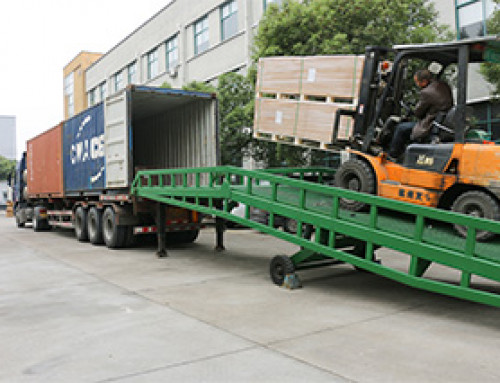
Leave A Comment